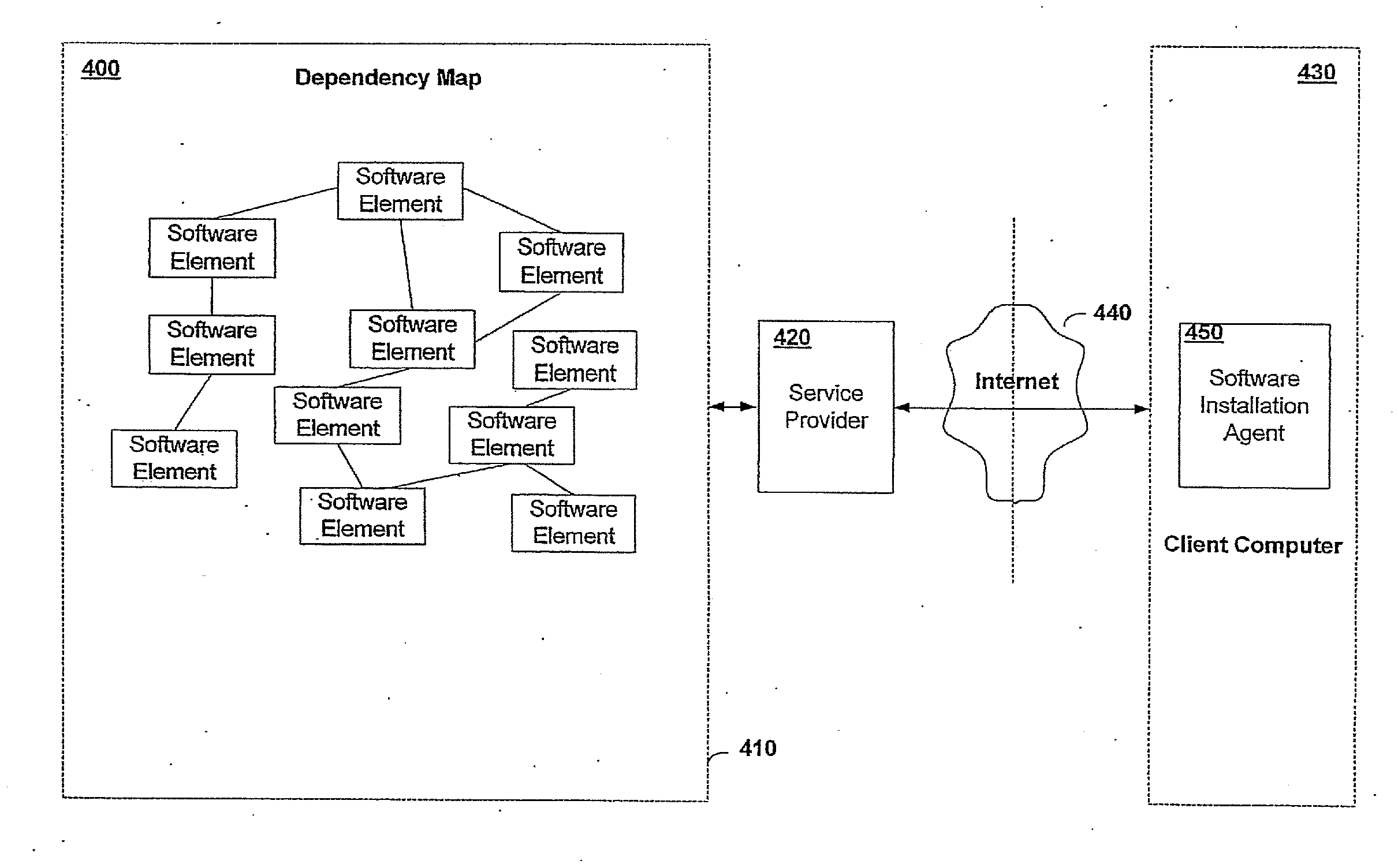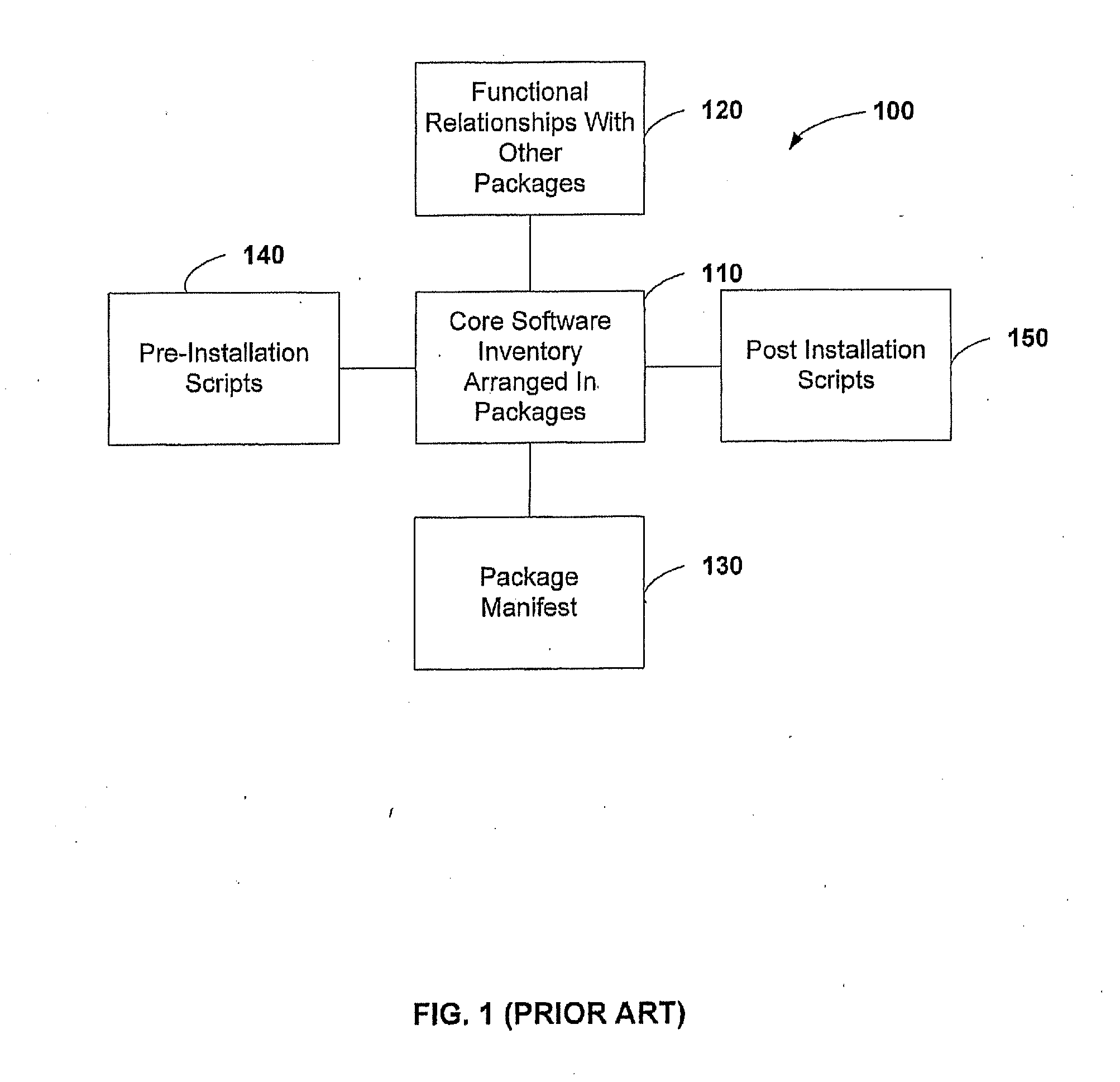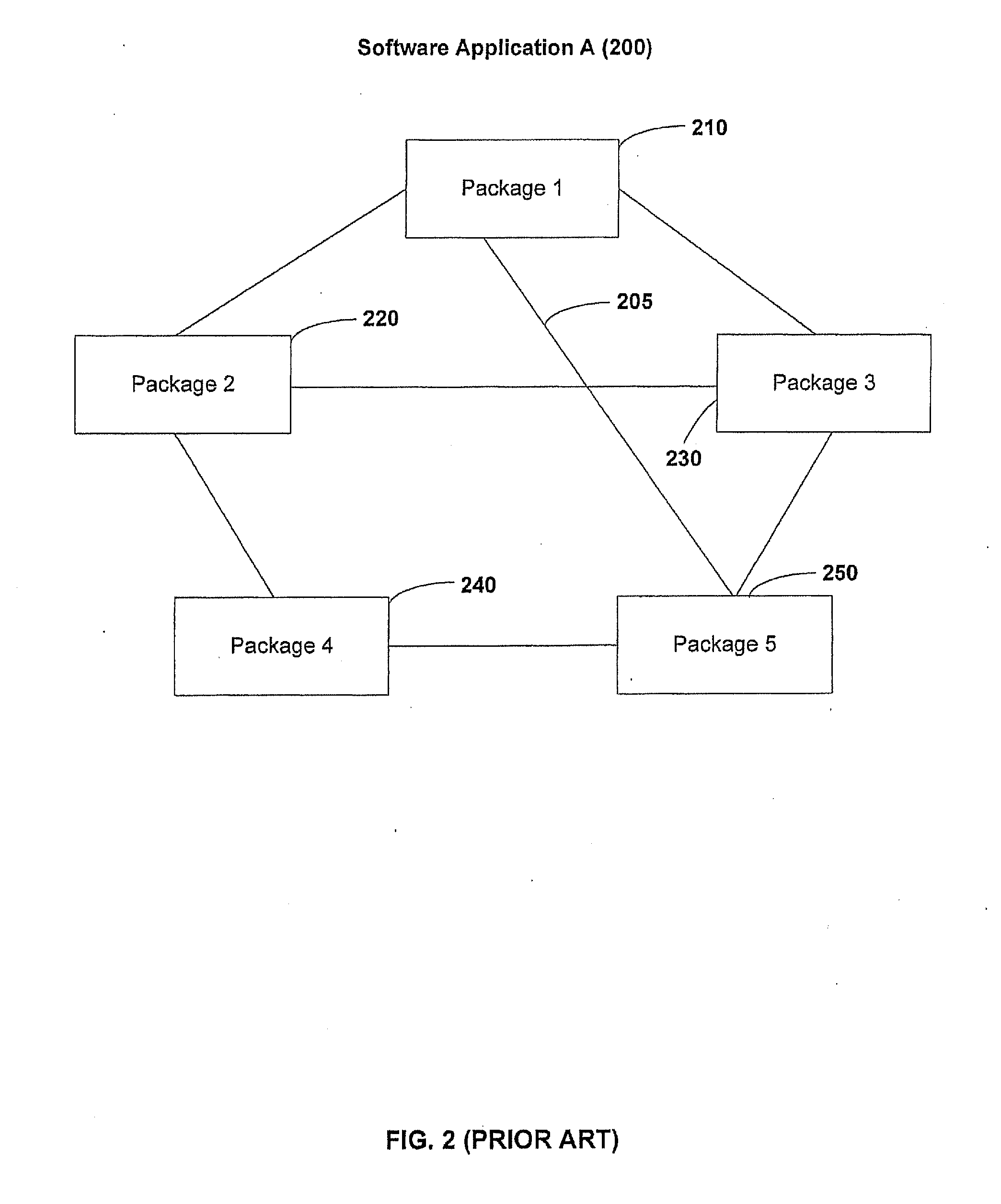As stated above, conventional software packages are not represented at the granular level of individual files because a typical
system administrator would find it exceedingly difficult to grasp the vast number of individual files and the complex dependencies that exist between them.
However, the remaining non-core files in an application may be configuration-dependent in that they are only needed under certain circumstances.
However, conventional software packaging often makes optional file installation difficult.
Further, knowledge of which files are needed for each of the above examples would be difficult or impossible for an administrator to ascertain as there may not be available information describing which files correspond to which features.
Besides making custom installations difficult or impossible, as set out above, conventional software packaging is also a cause of installation failures.
However, software element dependencies are often not absolute.
If an absolute dependency exists within a “circular relationship”, this can make resolution of such a relationship difficult.
Yet, the scripts are generated at the time of
software development, resulting in generic requirements without knowledge of the unique computing
system configurations the software will eventually be installed.
The constantly changing nature and intricacies of file level dependencies makes manual monitoring and use in installation by a
system administrator exceedingly difficult if not impossible.
However, this approach is less effective when trying to identify dependencies in an actual
operating system.
Due to the release of bug fixes or patches, a software application's version is constantly in flux.
This is due to the possibility of software drift.
On the other hand, if a dependency
route has unsuccessful installations, a default policy that involves the administrator would decrease the likelihood that the install may fail.
Such a change may be unacceptable to the administrator, as they may plan on installing an additional application that requires Solaris 9.0.
The reason for multiple iterations is due to the potential of the first
route being incomplete or inaccurate.
This
route may not be relevant to any previous routes or may not take
advantage of confidence factors, etc.
However, the rapid dependency route is the easiest to calculate since it is based on absolute dependencies.
In other words, the calculated route only includes dependencies between elements that will always exists, such that a
confidence factor is ineffectual, as the dependencies are not optional.
However, it is possible that the partially provided software manifest is incomplete or not granular enough for complete determination of the dependency route.
In such an instance, the route provided by the route manager may become invalid as the installation progresses.
The new version of libSocket may have new changes in the functional profile of libSocket, such that the applications that relied on the previous version may stop operating correctly.
However, the size of the map could be so large that local storage would be impractical.
Further problems may arise due to potentially unrecognized dependencies on the
client system that are not included in the software manifest.
In result, the initial portion of the dependency map streamed to the
client may be incomplete or inaccurate based on unrecognized dependencies in the software manifest that was communicated to the
service provider.
As previously stated, an unrecognized dependency can occur if a
system administrator manually removes files from the system.
For example, the
software agent may not be aware of such manual changes, hence the software manifest is not properly updated with such changes.
This results in a differences between the
client manifest and the actual files on the
client system.
This recalculation can occur many times and is highly related to the size and complexity of the installation job that is requested by the client.
In contrast, if a dependency route results in failure, its
confidence factor is diminished.
This may point to problems with pre-installed files.
For example, an existing application may have already experienced runtime errors.
Hence, the previous state of the
client system may already experience problems.
However, such a check is not mandatory.
However, it is likely that after a certain period of time, the number of unique route overlays may stabilize after the initial increase, as there are a limited number of installation paths available.
Large amounts of
disk space may be needed to store the dependency map data.
It is possible that the size and cost of storing all this data may become prohibitive unless measures are taken to phase out certain applications from the software warehouse based on differing criteria and to only store current software.
However, the
confidence factor of 40% falls below the threshold value, resulting in the software element being aged.
In a first level of aging, a file represented by a software element may be moved from the primary hard disks that comprise storage for the software warehouse to a slower retrieval mechanism such as tape drives or slower disk drives (e.g., slower seek times, RPMs, cache, etc.) In this level, access to these elements are still possible, but with reduced retrieval performance.
This would be the result of very few, if any, installations having been attempted with the route.
However, it is possible that an interim dependency route may need to be created to connect unrealized dependencies between the individual routes.
However, if any dangling reference are reported from the validation process, the dangling reference is returned to the
system administrator and the validation process halts.
Since a dangling reference is typically not permissible in the installation of a software application, the
simulation shows that the simulated dependency route would not be installed successfully.
One type of issue that a
simulation may be unable to recognize or fix is the possibility that some piece of software needed for an installation is unavailable.
In other words, it is possible that the software manifest of a
client system includes a dependency that is unforeseen or unrecognized by the
service provider.
If the client manifest is incorrect for some reason, then the dependency route created by the route
calculator may cause installation-time errors.
However, a client manifest may have inaccuracies for a number of reasons.
One common situation that may cause inaccuracies occurs when manual changes are made to the client system by a
system administrator.
However, a manual deletion of this shell would not show up in the client's manifest because the manifest is only updated based on changes that occur through the control of the
software agent.
However, during an actual installation the absence of sshd will likely cause installation-time errors.
For example, this approach would not validate the dependencies that exist between each software element, only that the software elements exist.
However, there are times when an installation is found to be successful yet there may be reasons that an administrator may wish to back out of the installation after it has been completed.
This often results in a mere approximation of the former check-pointed system due to the way conventional rollbacks are done at the
package level and not the file level.
Without such historically collected information, such a de-installation approach as described would be extremely difficult if not impossible.
This may point to problems with pre-installed files.
For example, an existing application may have already experienced runtime errors.
Hence, the previous state of the client system may already experience problems.
One problem with this approach is the inability to track or fix deviations or performance enhancements at the software element level, as the software would have been installed by the conventional
package approach as described in the background section of the present application.
Otherwise, it is difficult for the manifest to accurately reflect the current and historical software load of the source
server since a
software agent tracks changes to a manifest as the changes occur.
Often times, vendor support may be denied unless the client upgrades to the current version or installs the latest patch.
This approach is often flawed, as a particular patch may fix one thing, yet hinder others.
As such, a system administrator may spend a great deal of time trying to determine which patch causes the least problems regardless of its
release date.
 Login to View More
Login to View More  Login to View More
Login to View More 


